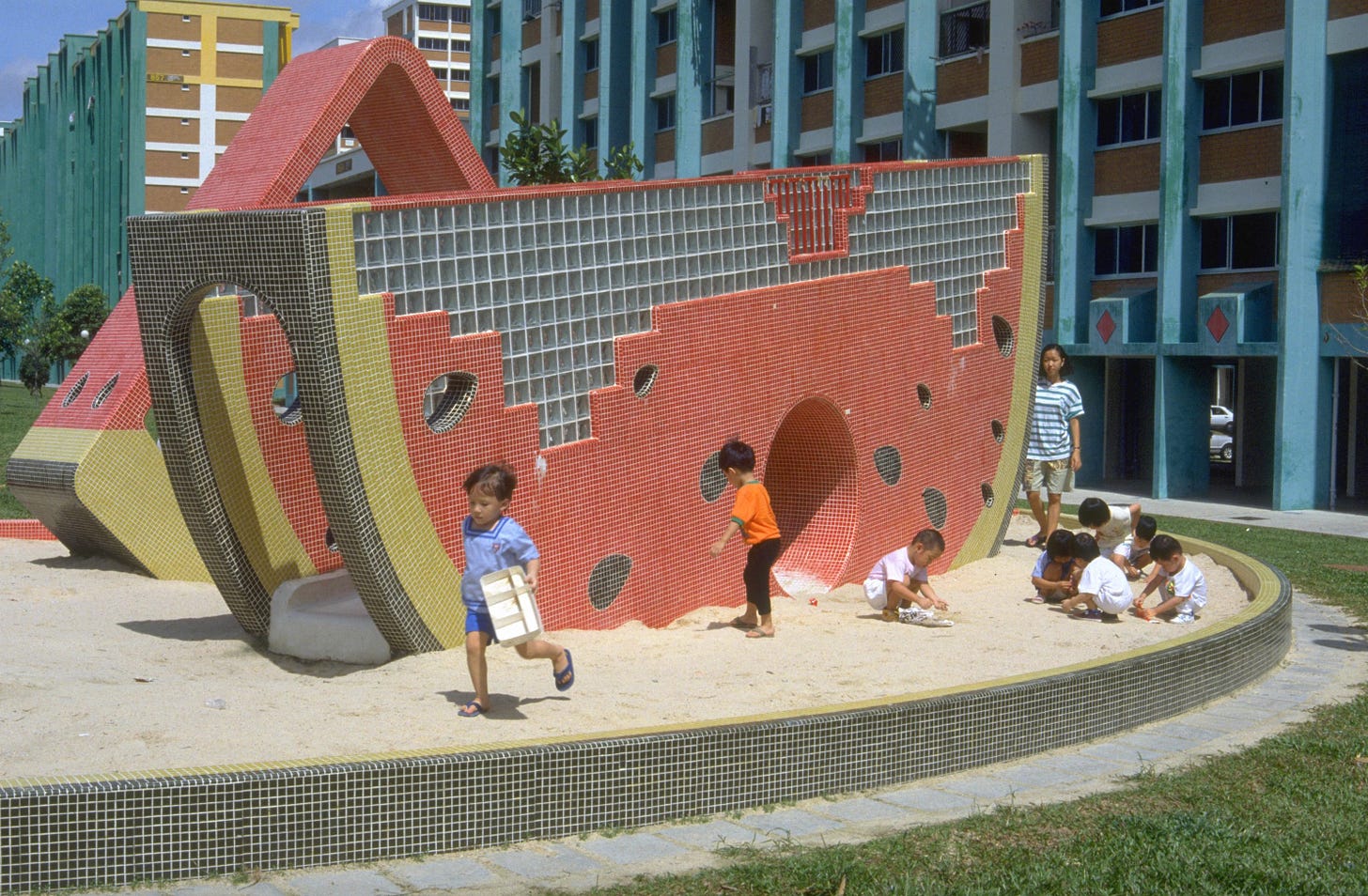My name is Linda. I write a bi-weekly newsletter about computer science, childhood, and culture.

It’s the weirdest personal pull/push moment in August. Finland declares it’s autumn: back to work! Let’s meet! France says: finally, it’s vacation! Do not call until September!
Both countries take their vacation time extremely seriously, so here I am, in between.
(Here’s a list of recommendations on summer Paris, before the rentrée rolls in.)
1.
In Singapore, Playgrounds Are Capsule of National Identity. In the early 1970s, the Housing and Development Board in Singapore launched an ambitious program to build distinctively Singaporean playscapes in the heart of new housing estates. The country’s first playground designer, Khor Ean Ghee, was trained not as an architect but as a watercolorist and interior designer. Between 1974 and 1984, he created over 30 sculptural playgrounds, featuring dragons, pelicans, elephants, and sampans.
“When the (play elements) don’t move… The children cannot play. They sit down and take photographs. Only with things like swings and see-saw… Ah, that’s when they really play!”
I love this idea, especially important in a time when a lot of playscape risks becoming visual backdrop for photo-ops. And from Maria Boey, another play designer.
“There should at least eight play values in each playground.”
Eight! How delightful to have a specific number. Makes me also think of what my play values are..
There’s even a map of the retro playgrounds in Singapore.
2.
I’ve been reading Evelyn Fox Keller’s Making Sense of Life. In it, she explores how biologists and mathematicians see the world through different lenses. One grounded in experiment, the other in formal reasoning.
While teaching medical students, Fox Keller showed how a biological problem with eleven variables could be reduced to just three worth measuring. The rest, she explained, followed logically.
The students bristled. “But you haven’t tested it—how can you be sure?”
It’s funny how a question from 2003 suddenly gives language to something I’ve been circling in my own work. How can you be sure?
Today, with computers playing a bigger role in biology, it feels important to notice and name these different ways of thinking.
3.
When is the earth going to not have more life? How fast can a peregreen falcon fly? How hard is coyotes bite? Are you alive? What’s the next planet to be found? Could there be a 9th planet in our solar system? What’s your favorite food? What do you like to play? What do you like to do?
Sample questions for AI from the research paper Children's Mental Models of Generative Visual and Text Based AI Models. The research feels very topical. Right now, kids are still figuring out what AI is and what it can do. Their mental models are open and flexible. In a few years, those ideas might be harder to change.
Reminds me also of Sherry Turkle’s early work on how children made sense of living versus non-living things. I’ve written about her here and here.
4.
Can information theory help explain why we find AI generated text so tedious?
I’ve been brushing up on Claude Shannon’s work lately. One of his key ideas is that the more unpredictable something is, the more information it carries. A random string like SDSUGDSMDKNEERR is full of information because I couldn’t have guessed it. This essay walks through the math behind it.
Information theory is one of those ideas that changed how I see things around me. Art feels interesting, because it’s unexpected, or in other words it has more information. AI-generated text feels annoying, because it’s made to avoid surprise and thus has less information. (Or in Shannon’s terms it’s low in entropy.)
5.
AE2025 is a ten-week cohort program to make an Applied Experiment: a functioning prototype of technology that enables people to exercise either care, self-control, inquisitiveness or a combination thereof. The program provides language, space, guidance and $7,000 to anyone anywhere in the world who is creating technology that brings out the best in us. Deadline: August 15th!
I especially loved the Library, which maps all the references, research and projects that influence the program.
6.
To close: Détour is an 11-minute love letter to French summer, cinema, and small tricycle adventures. Directed by Michel Gondry and shot entirely on an iPhone 7, it’s playful and tender. Gondry, who directed Björk’s Human Behaviour and Bachelorette, is part of my formative visual language.

